The Complete Guide to Signage Rebranding
Rebranding is a high-stakes opportunity to redefine how the world sees your business. But while most teams focus on logos, websites, and messaging, one piece is almost always underestimated: signage.
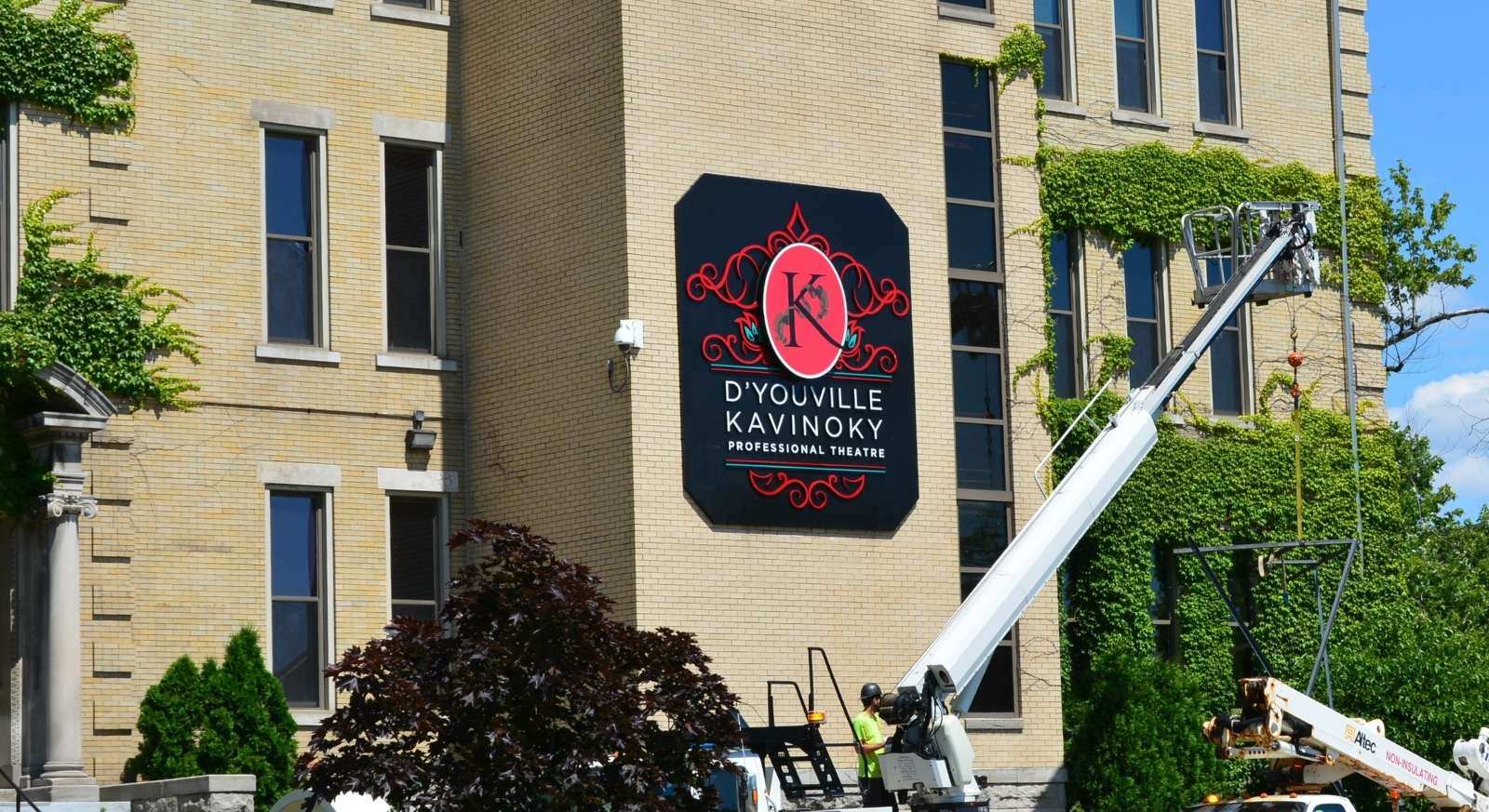
Unlike digital assets, signage is physical. It can’t be launched with a click. It’s governed by permitting, bound by real-world constraints, and spread across dozens, or hundreds, of locations. And if you don’t plan for it early, signage can delay your entire rebrand.
This guide walks you through everything you need to know about signage rebranding, from planning and budgeting to execution at scale.
On This Page
- Why Signage Planning Matters in a Rebrand
- Maintaining Brand Consistency Across Locations
- The Signage Rebranding Process: Step-by-Step
- Budgeting for Signage Rebranding
- How to Know If You're Ready: Key Questions to Ask
- Why Signage Rebranding is More Complex Than It Looks
- Planning for Digital Signage in Your Rebrand
- The Cost of Waiting Too Long
- What to Look for in a Signage Rebranding Partner
- How the Buffalo Bills Pulled Off a Stadium Rebrand
- Next Steps
Why Signage Planning Matters in a Rebrand
When timelines slip during a rebrand, signage is almost always the reason. It’s not because people forget signage exists, it’s because they underestimate how complex, variable, and time-sensitive it is to update at scale.
What slows teams down isn’t the design itself—it’s everything that happens after the creative work is done:
- Permitting and landlord approvals can take anywhere from a few weeks to several months, depending on the city, property type, and jurisdiction.
- Signage footprints vary dramatically from site to site, even within the same brand. You might have five different mounting types, four power setups, and multiple zoning restrictions across your locations.
- Multiple departments are involved. Signage touches facilities, marketing, construction, legal, real estate, and finance, and if no one owns it fully, critical steps fall through the cracks.
- Fabrication and install timelines are longer than expected. Signs aren’t off-the-shelf, they’re custom-engineered, built to order, and coordinated with local crews for installation.
It’s also one of the few parts of your rebrand that can't be fixed after launch. If signs aren’t ready, you either delay your go-live—or launch with locations that don’t match your new brand.
The earlier you begin planning your signage, the smoother your rollout will be. And the more consistent, professional, and cohesive your brand will appear across every location.
Maintaining Brand Consistency Across Locations
For national and regional brands, inconsistency across physical locations creates brand confusion and erodes trust. When one site has updated signage and another doesn’t, it sends the wrong message to your customers.
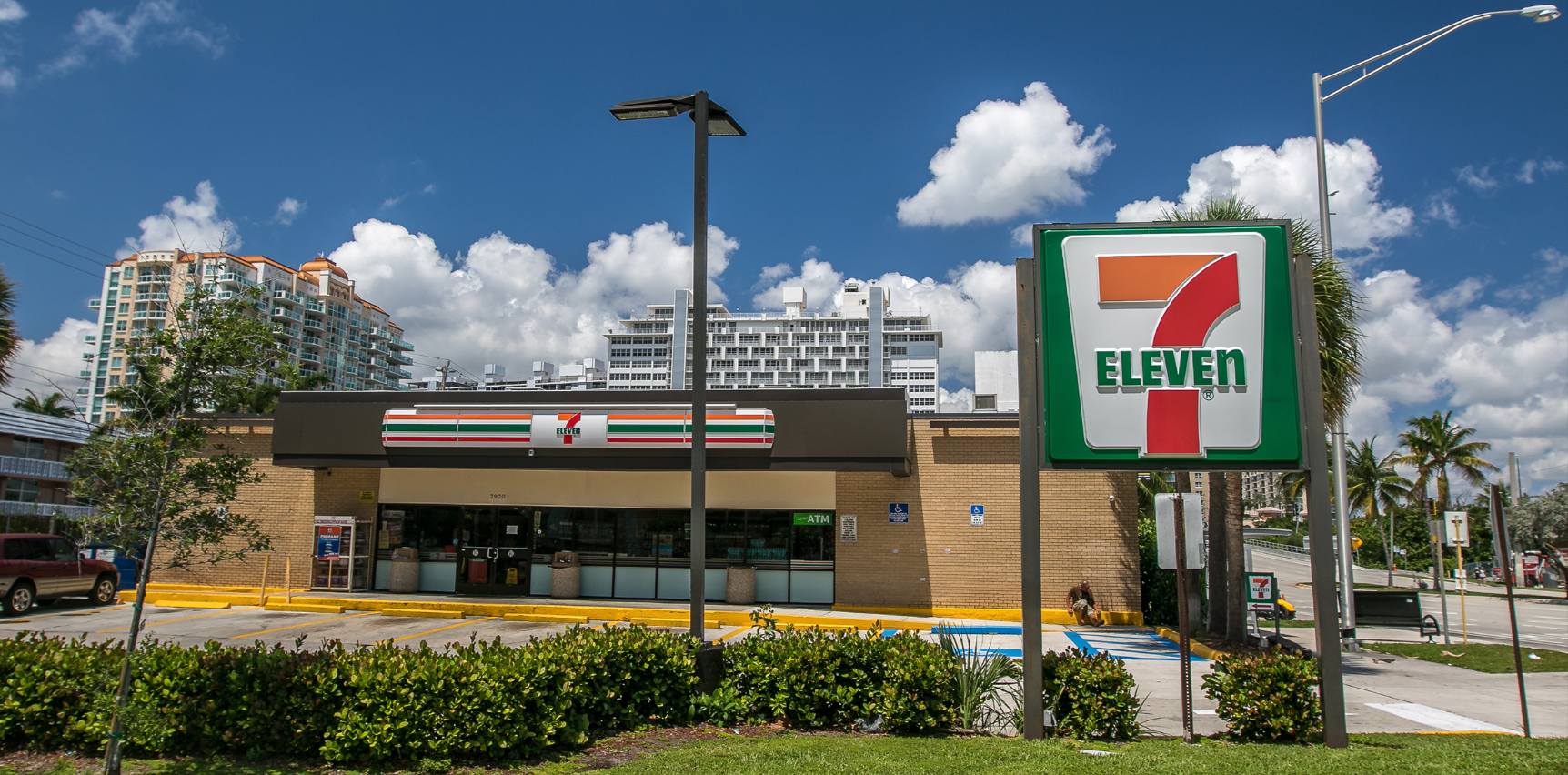
That’s why physical brand execution is just as important as the visual identity itself. Your signage needs to match, not just in logo and color, but in materials, lighting, proportions, and placement. The only way to do that at scale is through centralized planning, standardized sign systems, and a partner who can coordinate across every site.
The Signage Rebranding Process: Step-by-Step
1. Site Audits
Before anything else, you need a clear inventory of what exists today: sign types, dimensions, lighting, mounting, condition, and electrical access. It’s one of the most common points teams overlook. This guide breaks down the six key signage questions to ask before you start so you don’t hit surprises later.
2. Scope Definition
Not all signs need to be replaced. Some can be refreshed with overlays or new faces. Others may require full rebuilds. Knowing the right level of update for each location helps you phase the rollout, optimize your budget, and avoid unnecessary fabrication.
3. Permitting and Approvals
Each municipality has different sign code requirements and some take months to approve even straightforward applications. Landlords often have their own approval processes as well. Getting ahead of these long-lead items is critical.
4. Fabrication and Engineering
Signage is custom-built, not printed from a template. Final designs must be engineered for structural safety, lighting, and durability, especially for exterior applications. Material selection here has long-term brand and maintenance implications.
5. Installation Coordination
This is where everything comes together…or falls apart. Each site has its own install constraints: crane access, power hookups, after-hours access, weather windows, and more. Strong project management is what keeps installs moving without bottlenecks. Here’s a simple 10-step guide to managing a signage rollout that outlines how to keep this phase on track.
A well-planned signage rebranding strategy ensures each phase flows seamlessly into the next.
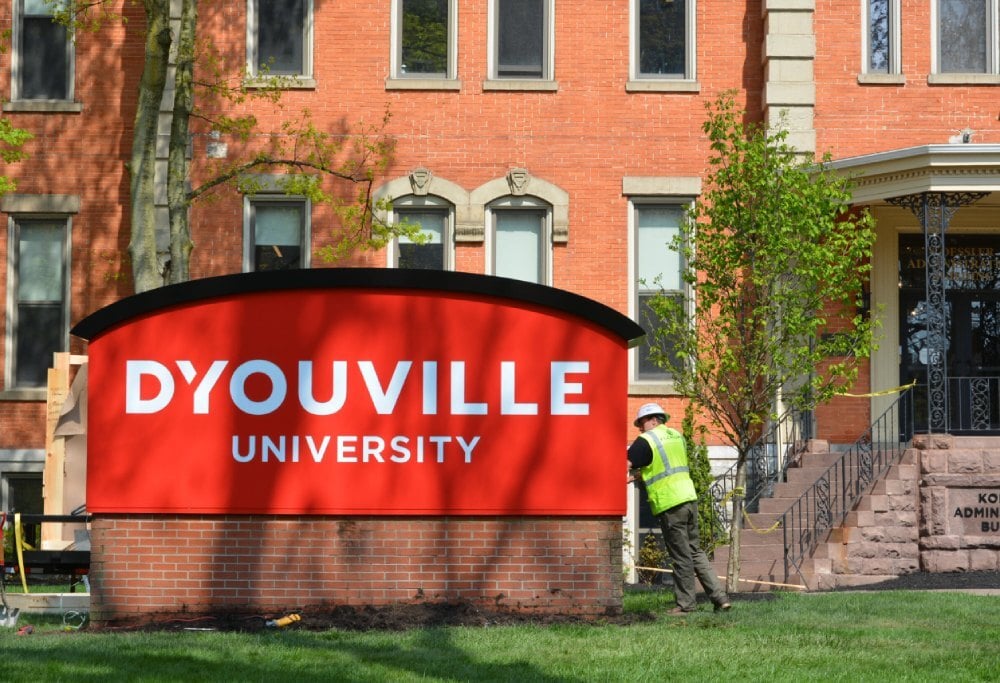
Budgeting for Signage Rebranding
Signage is often one of the most expensive, and most public-facing, parts of a rebrand. And yet, many teams wait too long to budget for it.
Sign costs vary widely based on:
- Sign type
(channel letters, pylons, digital message centers, etc.) - Site conditions (mounting surface, electrical access)
- Number of locations
- Permit and variance requirements
- Labor and equipment needs for install
Without a clear inventory and scope, it’s nearly impossible to budget accurately. That’s why early audits and phasing plans matter. They give you the visibility you need to build a realistic budget and avoid rushed decisions, change orders, or rework down the line.
For teams managing dozens or hundreds of sites, Flexlume also offers financing options to help smooth out capital costs. Flexible terms, fast approvals, and predictable monthly payments can make it easier to fund large-scale signage updates without straining your budget.
How to Know If You're Ready: Key Questions to Ask
Most rebrands come with fixed timelines, big expectations, and a lot of moving parts. But when it comes to signage, even experienced teams often miss key steps that can slow down the entire rollout. Before you dive into design or start placing orders, take a beat and assess where you actually stand.
Here are five questions every brand, facilities, or construction leader should be able to answer early:
- Do you have a full inventory of current signage across locations?
You need a clear picture of what exists (sign types, sizes, mounting, lighting, and condition) before you can estimate costs or plan production. - Are your rebrand timelines already locked in?
If your signage milestones don’t align with brand launch dates, you’ll either delay the rollout or go live with mismatched locations. - Do you know which signs require full replacement vs. updates?
Not every site needs a full tear-out. Some can be refreshed with overlays or new faces, saving time and budget if you’ve assessed them properly. - Is permitting already in progress for long-lead locations?
Some cities take months to approve sign permits. If you haven’t started that process, you’re already behind schedule. - Have you selected a signage partner with national reach?
Local shops often can’t scale. And large vendors may not prioritize your account. You need a partner that can operate across states while maintaining brand consistency.
Why Signage Rebranding is More Complex Than It Looks
Rebranding isn't just a creative exercise, it’s a logistical one. And signage is often where those logistics get most complicated.
Unlike digital assets, signage has to work in the real world. It has to fit the structure it’s going on. It has to meet local zoning codes. It has to be visible from the right angles, at the right distances, during the day and at night. And it has to do all of that without sacrificing brand consistency across dozens, or hundreds, of sites.
At most organizations, signage rebranding isn’t just one item. It’s a collection of distinct deliverables, each with their own site-specific requirements:
- Channel letter signs
on building façades - Monument and pylon signs at street level
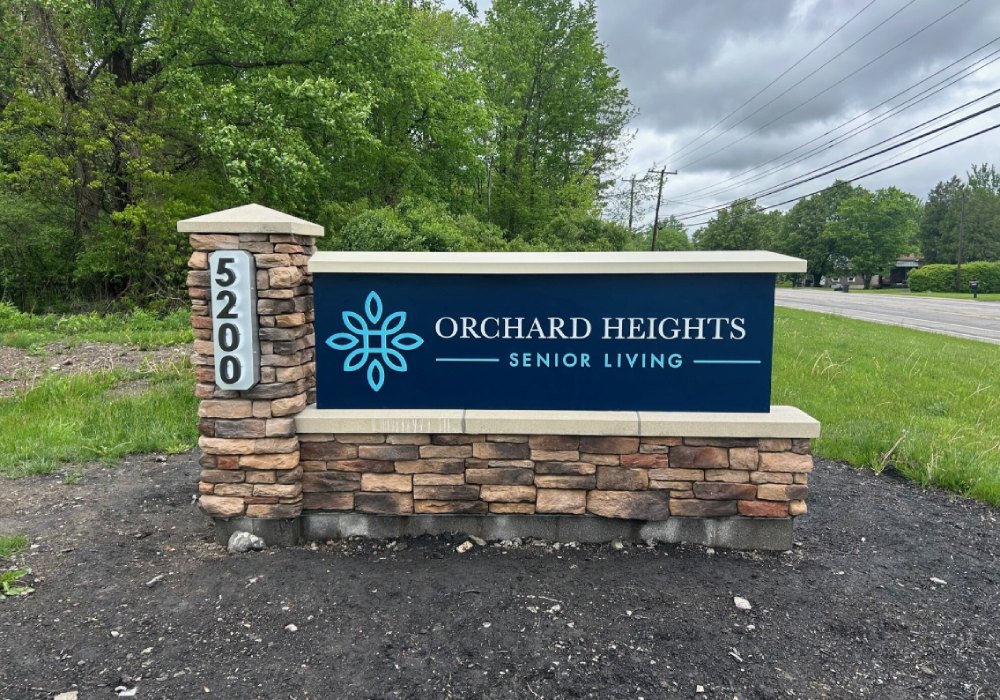
- Wayfinding and directional signs throughout the property
- Digital message centers requiring power access and integration
- Interior signs like wall graphics, ADA-compliant plaques, and branded elements
Each one of these needs to be custom designed, engineered, approved, built, and installed. Multiply that across your footprint, and you can see why signage becomes a bottleneck if it’s not addressed early.
And that’s before you factor in surprises, like outdated mounting structures, missing electrical, or municipalities that require multiple rounds of plan review.
Planning for Digital Signage in Your Rebrand
More brands are integrating digital message centers into their physical environments as part of modern rebrands. These signs offer flexibility, visibility, and dynamic content, but they also come with additional planning requirements.
If digital signage is part of your brand strategy, you’ll need to consider:
- Power access and control systems
- Local restrictions on brightness, movement, and content
- Software integration for content scheduling
- Structural support and clear sightlines

Digital signage isn’t just a swap-in, it’s an investment in long-term communication. It should be planned alongside static signage, not as an afterthought.
The Cost of Waiting Too Long
Rebrands are often built around firm launch dates: product rollouts, events, announcements, or campaigns. But signage doesn’t follow your calendar.
The biggest mistakes we see:
- Leaving signage to the final 60 days
- Waiting on final brand guidelines before scoping locations
- Assuming digital assets translate 1:1 to physical formats
What to Look for in a Signage Rebranding Partner
Not every signage company is equipped to support a rebrand across multiple states or regions. And choosing the wrong partner is often the first domino in a long chain of delays.
Look for a partner who offers:
- Multi-state permitting experience
- In-house design, engineering, and fabrication
- Scalable install coordination
- Experience managing rebrands at scale
- A single point of contact to streamline communication
How the Buffalo Bills Pulled Off a Stadium Rebrand Without Delays
When the Buffalo Bills announced their stadium rebrand in partnership with Highmark Blue Cross Blue Shield, the scope went far beyond swapping a few signs. Dozens of exterior and interior elements needed to be replaced, retrofitted, or relocated, all while coordinating with NFL timelines, sponsor visibility requirements, and the operational demands of a live sports venue.
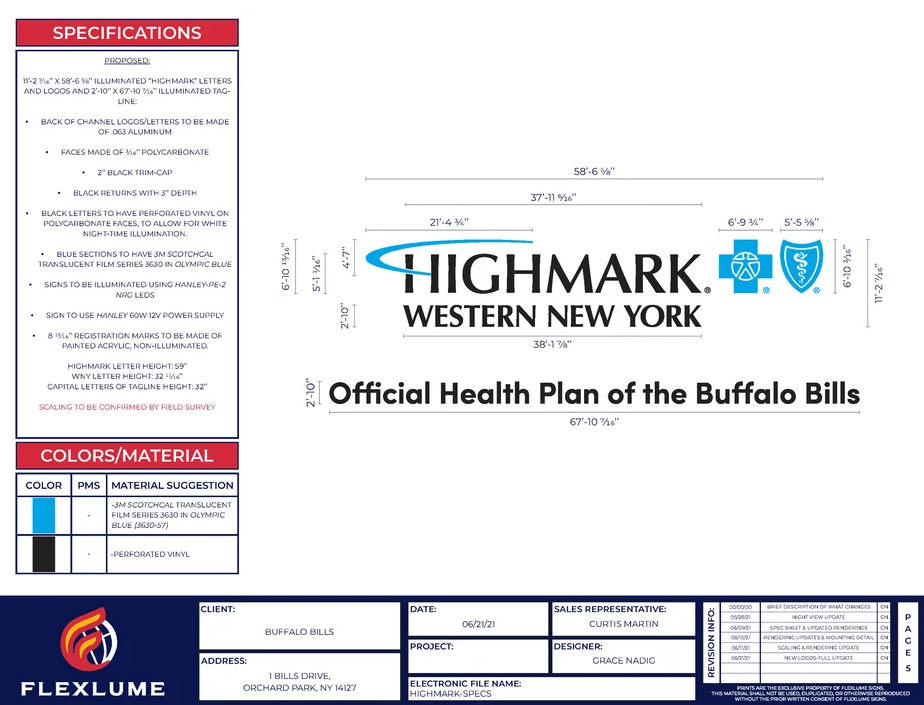
Flexlume led the effort from start to finish. Our team engineered new signage solutions that worked across a mix of surfaces and elevations, managed tight coordination between electricians, branding teams, and stadium operations, and ensured that every install was completed on time, well ahead of the Bills’ first home game of the season.
.jpg)
Next Steps
If you're involved in a rebrand, or even thinking about one, the best thing you can do is get a handle on your signage footprint now.
Start with a quick, no-pressure assessment:
- Takes under 3 minutes
- Personalized results with next steps
- Shows if you’re ready—or what’s missing
